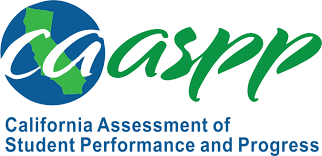On March 25, 27 and 28, Woodside High School juniors will be participating in the California Assessment of Student Performance and Progress test (CAASPP).
The CAASPP tests aim to check the performance of students all throughout the state of California. There are three sections to this test: Science, Mathematics and English Language Arts.
“The CAASPP is California’s state-wide testing,” instructional vice principal Cara Klackle said. “It gives information to the state about how the district and how specific schools are performing, and it measures student’s progress toward California state standards.”
Through this annual test, districts and schools can see how their students’ results vary.
“This test helps [measure] progress toward standards,” Klackle said. “Since the standards are common across the state of California, it does compare our students to other students in California.”
These test results are slightly different from other tests students commonly take. It is scored on a four level system. As its levels are very broad due to there only being four options compared to a system out of 100 points, it has the potential to benefit students with their results.
“As of today, the four levels that they use to describe the results are standard not met, level two standard nearly met, level three standard met and level four standard exceeded,” college and career advisor Francisco Gil said.
Through these scores, it helps not only California compare results but also allows teachers to see what students need more improvement on.
“In my role as a counselor, it helps with being able to just show a measurement of how students are learning and how they’re grasping the information,” Gil said. “It also helps for all the educators to be able to look at and measure what students are grasping and what skills they’re mastering, and what skills they still need a little bit more support in.”
In past years, the Sequoia Union High School District (SUHSD), which consists of Carlmont, Menlo-Atherton, Sequoia, Woodside, TIDE Academy a STEAM-focused school, Redwood, a continuation high school and East Palo Alto Academy, a dependent charter school has noticed a trend throughout students. This trend, according to Klackle, is that they are not aware of this test and its effects as well as knowing how to prepare for this assessment.
“The district took on a large campaign where they created modules on Canvas for all 11th graders to use [to study for the test] because they discovered that students weren’t really aware of the potential impact that the scores could have on college,” Klackle said. “They then drew names of students for seven weeks at each school site to win prizes [such as] Stanley mugs to Bose headphones.”
Although these tests can have an impact on college, it does not mean that it impacts your entry.
“For the California State University (CSU), it’s not going to at all negatively impact your ability to be able to apply or get admitted to the school,” Gil said. “However, for the CSU system, [they use these to] measure students’ readiness for college-level coursework in English and mathematics [such as] placement for first-time freshmen.”
Gil expressed that hearing this may scare students but he mentions how these scores are not automatically sent to these institutions. Students chose if they would like to include these scores when applying to CSUs.
“One thing to keep in mind with that is, when you’re applying to the CSU your senior year, it does ask if you would like to have your scores reported so you can opt for consent,” Gil said. “So it is not mandatory to be submitted.”
Gil suggested students try their best because it can help students get into or even pass common-level courses in CSUs.
“I always remind students to approach [this test] with an open mind,” said Gil. “Tests can be really stressful or anxiety-provoking for students, so I just always remind them to get a good night’s rest and make sure that they eat something.”






